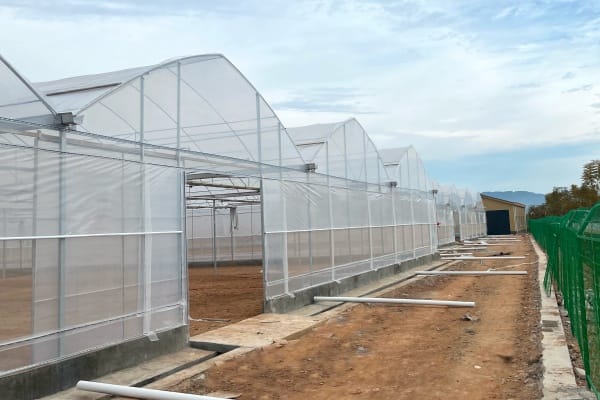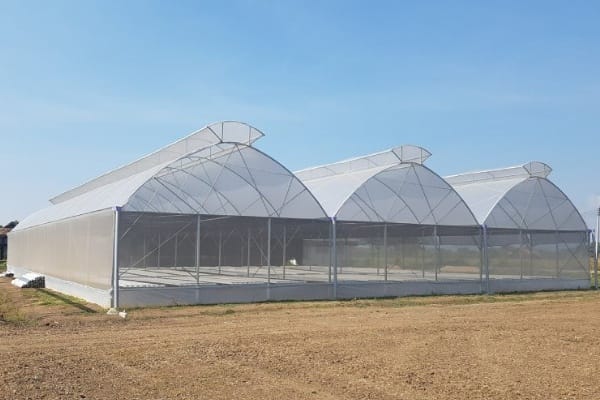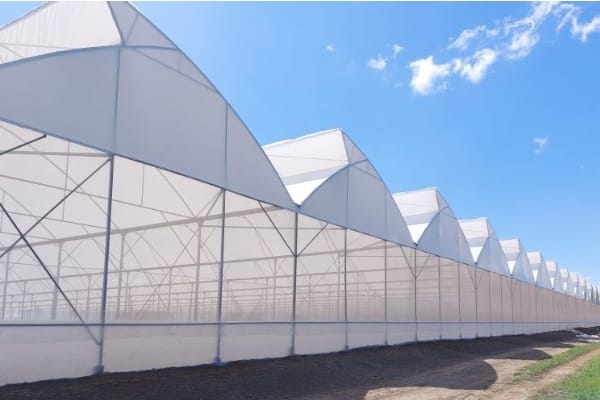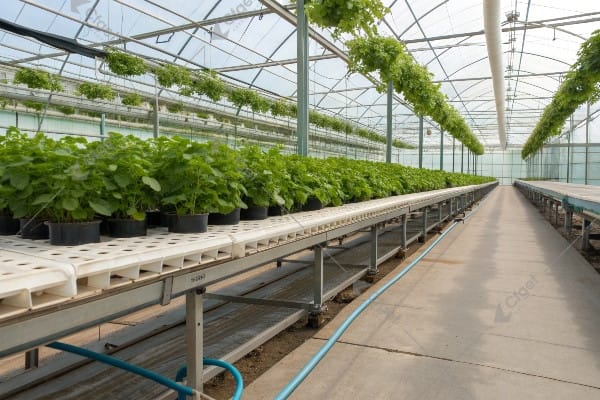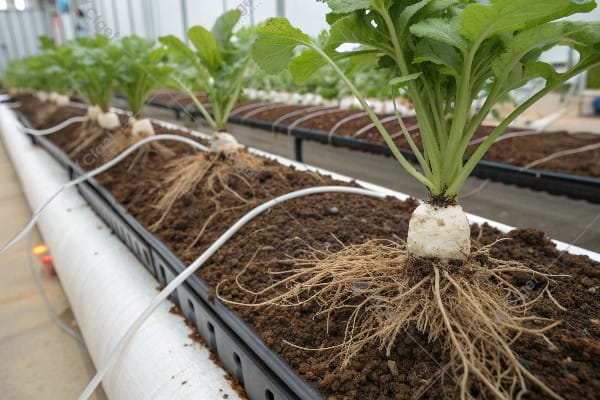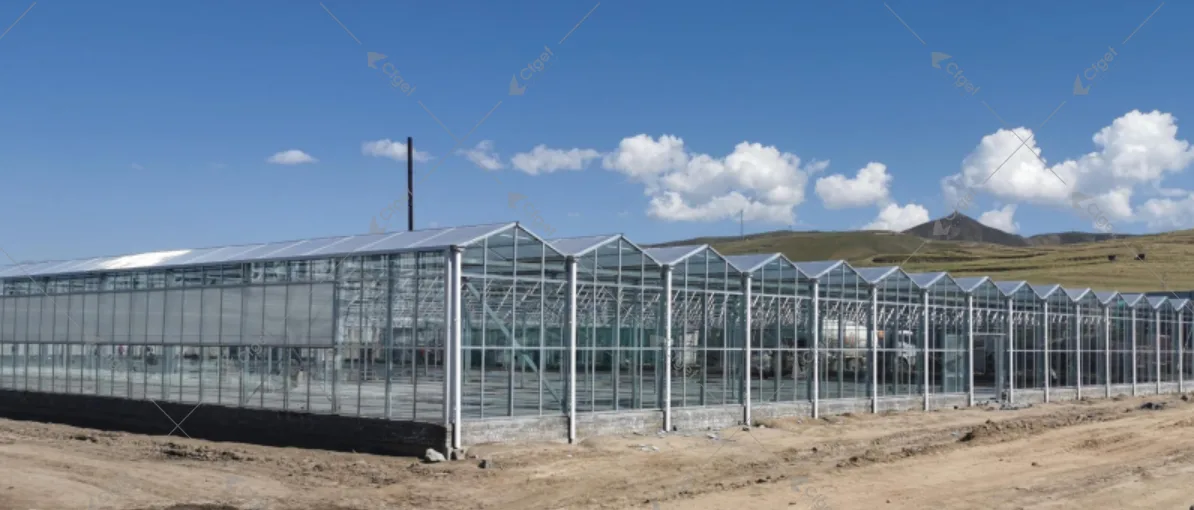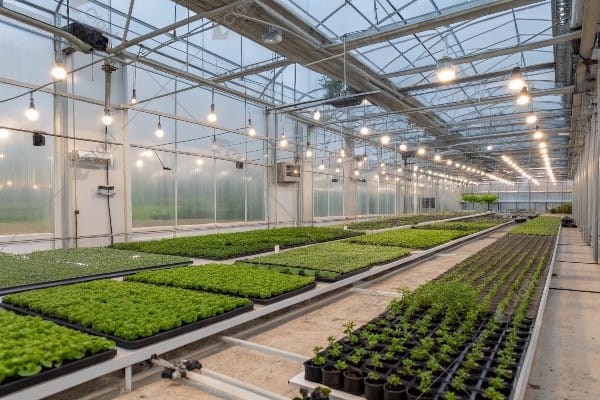Choosing the wrong greenhouse type costs thousands in lost productivity. Many growers struggle with structures that don’t match their crops, climate, or budget requirements.
Commercial greenhouse selection depends on four key factors: crop requirements, local climate conditions, budget constraints, and desired environmental control level. The right choice can increase yields by 40-60% while reducing operational costs through optimized design for specific growing conditions.
Multiple greenhouse designs serve different crops and climate requirements effectively.
After nearly three decades designing greenhouse systems, I have learned that no single structure fits every situation. Each project requires careful analysis of growing requirements, environmental conditions, and business objectives. The greenhouse becomes your crop’s home for years, making the initial selection decision critical for long-term success.
What Crops Will I Be Growing? (Vegetables, Flowers, Seedlings, etc.)
Crop selection drives every greenhouse design decision. Different plants demand specific growing environments, structural heights, and climate control systems that determine your facility requirements.
Vegetable crops require 4-6 meter heights for vertical growth, while flower production needs 3-4 meters with specialized benching systems. Seedling operations demand precise temperature control and high light transmission, favoring multi-span designs with advanced environmental systems.
Each crop type requires specific structural and environmental considerations.
Vegetable production demands substantial structural height and support systems. Tomatoes, cucumbers, and peppers grow 3-5 meters tall, requiring strong truss systems and wire supports. These crops need excellent ventilation for disease prevention and CO2 supplementation for enhanced photosynthesis. Root zone heating becomes essential for optimal nutrient uptake and growth rates.
Our vegetable greenhouse designs incorporate gutters at 4-6 meter heights with reinforced structures supporting crop loads up to 50 kg per square meter. Ventilation systems provide 4-6 air changes per hour through roof vents, side vents, and forced air circulation. Heating systems maintain root zone temperatures at 18-22°C while allowing air temperatures to fluctuate with natural cycles.
Flower production requires different structural considerations. Cut flowers need 3-4 meter heights with moveable bench systems for efficient space utilization. Potted plants demand flexible growing areas that accommodate different pot sizes and growth stages. Specialized shading systems control photoperiod for timing flower production to market demands.
Climate control for flowers focuses on humidity management and air circulation. High humidity promotes fungal diseases, while low humidity causes flower quality degradation. Our flower greenhouse designs maintain 60-70% relative humidity through precise ventilation control and evaporative cooling systems.
Seedling production demands the highest level of environmental precision. Young plants require stable temperatures, consistent moisture, and optimal light conditions for uniform germination and growth. Propagation areas need 25-28°C soil temperatures with 80-90% humidity levels during germination phases.
| Crop Type | Height Requirement | Key Features | Climate Priorities |
|---|---|---|---|
| Vine Vegetables | 4-6 meters | Support systems, CO2 injection | Root zone heating, ventilation |
| Leafy Greens | 2-3 meters | Hydroponic systems, LED lighting | Uniform temperatures, air flow |
| Cut Flowers | 3-4 meters | Moveable benches, shading | Humidity control, photoperiod |
| Potted Plants | 3-4 meters | Flexible spacing, irrigation | Drainage, air circulation |
| Seedlings | 2-3 meters | Germination chambers, misting | Precise temperature, high humidity |
Specialized crops require unique considerations. Cannabis cultivation demands light-proof structures with advanced security systems and precise environmental control. Mushroom production needs insulated structures with specialized ventilation for CO2 removal and humidity management. Research applications require compartmentalized spaces with independent climate zones.
What Is My Budget and What Are My Climate Conditions?
Budget constraints and local climate determine feasible greenhouse options. Understanding both factors prevents costly mistakes and ensures sustainable operations within financial capabilities.
Basic single-span greenhouses cost $25-40 per square meter, while advanced multi-span facilities range from $80-150 per square meter. Cold climates require insulated structures and heating systems that increase costs by 30-50%, while hot climates need cooling systems and specialized ventilation adding 20-40% to base costs.
Budget planning must account for both initial costs and ongoing operational expenses.
Budget analysis requires understanding total ownership costs beyond initial construction. Basic plastic tunnel houses provide economical starting points for new growers or seasonal operations. These structures cost $25-40 per square meter but offer limited climate control and shorter lifespans of 3-5 years.
Polycarbonate greenhouses represent the middle ground with costs of $50-80 per square meter. These structures provide better insulation, longer lifespans of 15-20 years, and moderate climate control capabilities. They suit most vegetable and flower operations in temperate climates.
Glass greenhouses offer premium performance with costs of $80-150 per square meter. Superior light transmission, excellent insulation, and 25-30 year lifespans justify higher initial investments. These structures suit high-value crops and regions with extreme weather conditions.
Climate analysis determines structural requirements and operational costs. Cold regions below -10°C need insulated foundations, double-wall coverings, and substantial heating systems. Heating costs can reach $15-25 per square meter annually in harsh climates, requiring energy-efficient designs and renewable energy integration.
Hot climates above 35°C require specialized cooling systems including evaporative cooling, shade systems, and enhanced ventilation. Cooling costs range from $8-15 per square meter annually, depending on local humidity levels and electricity costs.
Wind loads influence structural requirements significantly. Coastal areas and exposed sites need reinforced frames and foundations that increase costs by 15-25%. Snow loads in northern regions require stronger roof structures and steeper angles for snow shedding.
| Climate Zone | Recommended Structure | Key Features | Cost Impact |
|---|---|---|---|
| Cold (< -10°C) | Insulated multi-span | Double walls, heating system | +40-60% |
| Temperate (-5 to 25°C) | Standard polycarbonate | Basic climate control | Baseline |
| Hot Dry (> 30°C) | Ventilated single-span | Cooling pads, shade cloth | +20-30% |
| Hot Humid (> 25°C, 70%+ RH) | Naturally ventilated | Large vents, fans | +15-25% |
| Windy/Coastal | Reinforced structure | Heavy-duty frame, anchoring | +20-35% |
Financing options affect greenhouse selection. Cash purchases allow optimal design choices without payment constraints. Equipment financing enables higher-quality structures with 5-10 year payment terms. Lease-to-own arrangements provide access to advanced systems with lower initial outlays but higher total costs.
How Much Environmental Control Do I Need?
Environmental control requirements determine greenhouse complexity and operational capabilities. Different crops and market demands require varying levels of precision in temperature, humidity, and atmospheric management.
Basic passive ventilation suits hardy crops and seasonal production, while advanced climate control with heating, cooling, and CO2 injection increases yields by 30-50% for premium crops. Automated systems cost 40-60% more initially but reduce labor costs and improve crop consistency significantly.

Environmental control complexity scales with crop requirements and market demands.
Basic environmental control relies on natural ventilation through roof and side vents. Manual or automatic vent operators respond to temperature changes, providing adequate climate management for hardy vegetables and seasonal flowers. These systems cost $5-10 per square meter and suit operations with moderate quality requirements.
Intermediate control adds heating systems for season extension and consistent production. Gas heaters, hot water systems, or radiant heating maintain minimum temperatures during cold periods. Basic cooling through evaporative pads or misting systems manages excessive heat. Total costs range from $15-25 per square meter.
Advanced climate control integrates multiple systems for precise environmental management. Computer-controlled heating, cooling, ventilation, and humidity systems maintain optimal growing conditions regardless of external weather. CO2 injection systems enhance photosynthesis during periods of reduced ventilation.
Our most sophisticated installations include integrated pest management systems, automated irrigation with fertigation, and environmental monitoring with remote access. These systems cost $40-60 per square meter but provide exceptional crop quality and operational efficiency.
Automation levels vary based on labor availability and operational scale. Manual systems require daily monitoring and adjustment but minimize initial investments. Semi-automated systems handle routine adjustments while requiring periodic oversight. Fully automated systems operate independently with remote monitoring capabilities.
| Control Level | Key Components | Suitable Crops | Investment Range |
|---|---|---|---|
| Basic | Natural ventilation, manual controls | Hardy vegetables, seasonal flowers | $5-10/m² |
| Intermediate | Heating, basic cooling, automatic vents | Most vegetables, year-round flowers | $15-25/m² |
| Advanced | Computer control, CO2, precise climate | Premium crops, research applications | $30-45/m² |
| Automated | Full integration, remote monitoring | High-value crops, large operations | $40-60/m² |
Energy efficiency considerations become crucial with advanced control systems. Variable frequency drives on fans and pumps reduce electricity consumption by 20-30%. Thermal screens retain heat during cold periods and provide shade during hot weather. Heat recovery systems capture waste heat from ventilation air.
Data logging and analysis capabilities enable continuous improvement of growing protocols. Modern control systems record temperature, humidity, light levels, and energy consumption for detailed analysis. This information guides optimization of growing conditions and identifies opportunities for cost reduction.
Is a Single-Span or Multi-Span Greenhouse Better for Me?
Structural configuration affects construction costs, operational efficiency, and expansion possibilities. Single-span and multi-span designs each offer distinct advantages depending on operation size and management preferences.
Single-span greenhouses cost 15-25% less per square meter and provide easier crop management access, while multi-span structures offer 20-30% better energy efficiency and superior environmental control through larger air volumes and reduced perimeter-to-area ratios.
Different structural approaches suit various operational scales and management styles.
Single-span greenhouses provide individual growing environments with independent climate control. Each structure operates separately, allowing different crops or growing protocols within the same facility. This flexibility suits diversified operations or growers experimenting with multiple crops simultaneously.
Construction costs favor single-span designs due to simpler structural requirements and standardized components. Foundation work requires less precision, and structural loads distribute more evenly. Installation proceeds faster with smaller crews and standard equipment. Maintenance access remains excellent with individual structure accessibility.
Multi-span greenhouses create large continuous growing spaces with shared structural elements. Gutters, columns, and foundations serve multiple growing bays, reducing material costs per square meter. Larger air volumes provide more stable environmental conditions and improved energy efficiency.
Our multi-span designs accommodate spans from 6-12 meters with unlimited length possibilities. Structural engineering optimizes column spacing and load distribution for maximum growing space utilization. Shared utilities including heating, cooling, and electrical systems reduce installation and operational costs.
Operational efficiency differs significantly between configurations. Single-span structures require individual climate control systems and separate utility connections. Labor moves between structures for daily operations, potentially reducing efficiency. However, pest and disease problems remain contained within individual structures.
Multi-span facilities enable efficient material handling with internal transportation systems. Centralized utilities provide consistent services throughout the facility. Climate control systems manage larger volumes more efficiently, reducing energy consumption per square meter. However, pest and disease issues can spread throughout connected spaces.
| Configuration | Advantages | Disadvantages | Best Applications |
|---|---|---|---|
| Single-Span | Lower cost, flexibility, containment | Higher energy use, more labor | Small operations, diverse crops |
| Multi-Span | Energy efficiency, operational scale | Higher initial cost, disease spread | Large operations, single crops |
| Hybrid | Balanced approach, sectional control | Moderate complexity | Medium operations, multiple crops |
Expansion considerations favor different approaches based on growth plans. Single-span additions integrate easily with existing operations, allowing incremental growth as markets develop. Multi-span expansions require larger investments but provide economies of scale for established operations.
Site constraints influence structural selection significantly. Narrow sites suit single-span arrangements with multiple structures. Large open sites accommodate multi-span designs more effectively. Slope conditions may favor single-span structures that follow natural contours better than large multi-span facilities.
Future flexibility requirements guide long-term planning decisions. Single-span configurations adapt more easily to changing crop requirements or operational modifications. Multi-span structures provide stability for consistent long-term production but require more substantial modifications for significant changes.
Conclusion
Successful greenhouse selection balances crop requirements, climate conditions, budget constraints, and operational preferences to create optimal growing environments for long-term profitability.

